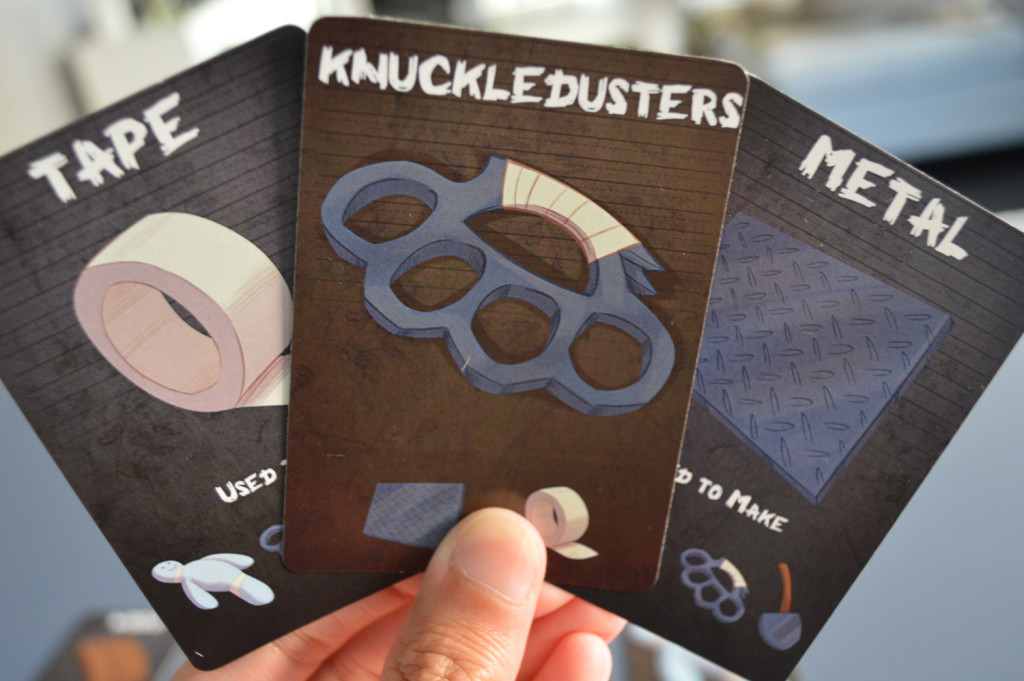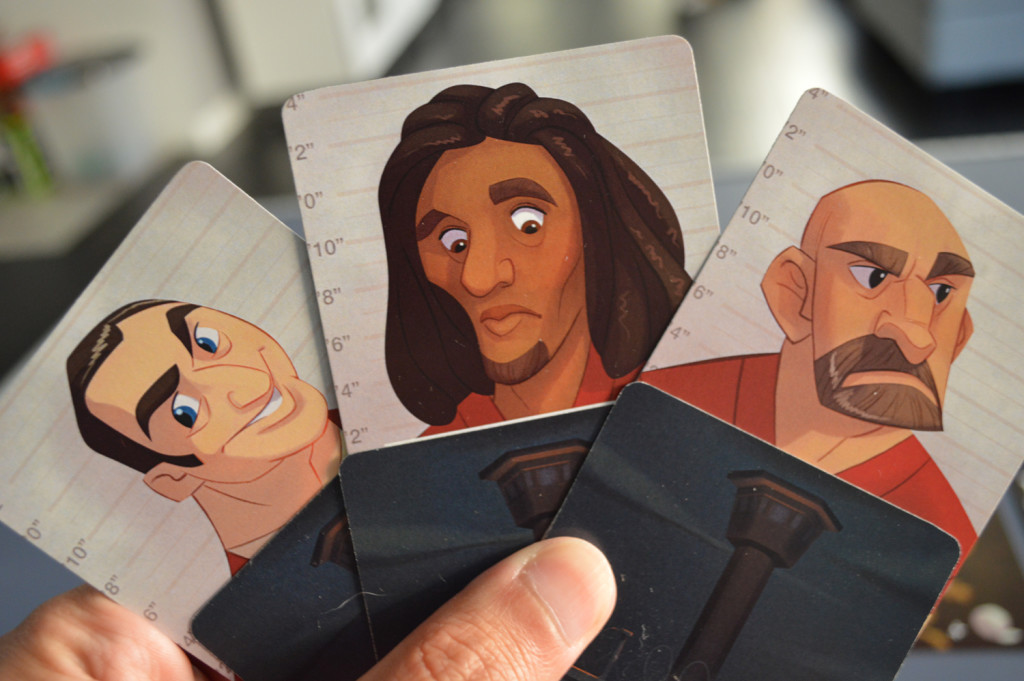Games like “The Escapists” (prison-escape simulators) are few and far between. For those of you who not in the know, you generally have to cobble together random items, observe patrol routes, and etc. in order to break out. “Jailbreakers: Plan Your Escape”, a tabletop game seeking your support on Kickstarter, has roughly the same general premise. Each player will be tasked with collecting and crafting items so that they can attempt escape. The first player to successfully get two of their three prisoners to escape, wins the game! Before I get into the nitty-gritty details, I’d like to thank Brent Howland from Qullus Games for reaching out and offering me a print-and-play copy for preview purposes. It’s important to stress that PnP’s most certainly do not represent the final product, making everything featured in this article (including the rules) subject to change. Go to website to see more details, if you got interested.
Setting up the game is relatively simple, though the details will change slightly based on how many people are playing the game. To keep this article moving, I’ll opt to quickly cover a typical four-player game setup. Firstly, each player receives three prisoner cards and three dice of all the same color. The twelve placement cards, which make up the playing area, are arranged in a 3×4 grid in numeric order (1-12). The two guard cards are placed on the “6” and “12” spots. The material cards (4 of each type) and crafted item cards (2 of each type) are laid out, face-up, for all to see. The escape plan deck is shuffled and five are drawn face-up, while the escape deck (containing 10 success and 7 fail cards) is shuffled and simply placed face-down. Again, the above will change slightly based on how many people are playing (to keep things balanced).
The game is played over a series of rounds and every round, everyone will have a number of turns equal to the number of prisoners they have in front of them. At the end of a round, the dice are removed from the board and the guards move up a space (numerically). Guards on the 12 space move to the 1.
On a player’s first turn, they’ll take one of the dice in front of them and roll it. Depending on the value rolled, they’ll place the die on an empty location card of equal or lesser value. If you rolled a four, for example, you could place the die on the 1, 2, 3, or 4 spot (assuming they aren’t already occupied). If the player is forced to land on a guard, they’ll temporarily lose that die until they can pay two material cards to free them (this happens at the end of the round). If a player can’t place a die at all (all the spaces are occupied), they’re forced to pass. Once the player chooses an unoccupied space, they’ll be able to take the action on said card. Most actions revolve around the player collecting a resource of a particular type, though a few involve stealing from other players.
After a player’s initial turn (and everyone has taken their first turn in clockwise order), they’ll roll one of the other dice in front of them and add the existing die’s value (the one already on the board, regardless of location) to one rolled to determine where it can be placed. For example, if a player already has a die valued at “3” on the board already and rolls a “4”, that second die can be placed on an empty space ranging from 1-7. In other words, the first die will help boost the second die to places a single die couldn’t normally get to. Likewise, the value of the second die will be added to the third die (assuming you have one). Of course, a player may opt not roll at all and pass their turn to the next player.
Eventually, players will be able to collect enough materials in order to craft items. At any point during a player’s turn, they can discard two items to craft the appropriate card. Crafting cards is important for two reasons: 1) some crafted cards give players passive abilities and 2) crafted cards help players escape. With regards to the former, these passive abilities can range anywhere from being able to reroll dice and adding pips to your die roll to needing less success cards in order to escape.
Speaking of which, players can use crafted cards to escape with one of their prisoners. To do that, they’ll put aside the cards in their inventory that match the requirements listed on one of the face-up escape plan attempt cards. During an escape attempt, the player will draw a number of cards from the escape deck. The number of cards drawn all depends on how many crafted item cards were used…two crafted item cards = six drawn escape cards, three crafted item cards = five drawn escape cards, and etc. In other words, the more crafted items needed/played, the less escape cards you’ll need to draw.
The player attempting escape will now push their luck, drawing one card at a time and deciding if they want to keep going. Two fail cards drawn results in all of the crafted items being taken. Backing out of an attempt is still a fail, however the player can keep half of his cards. As attempts are failed, one fail card is removed from the deck to make it easier going forward. Likewise, a success ADDS one fail card to the deck to signify that the guards are put on high alert. A player who succeeds returns all the cards used to the supply, but is halfway to winning the game. The first player to get two of their prisoners to escape, wins the game!
Keep in mind that the above is simply an overview of the rules and not meant to be a guide on how to play. With that said, it should give you a rough idea as to what you’re in for should you support this Kickstarter project. I personally liked the push your luck mechanic and the bit about removing or adding cards depending on the results…it ensured that the game didn’t drag on too long due to an unlucky string of fail cards. For a slightly faster game, you can reduce the amount of escape cards drawn by 1 or 2. I also liked the fact that the crafted item cards had two uses as opposed to one…it made me think a little bit about my decisions. For example, there might be a crafted item card with a really cool ability, but can’t be used in any of the four escape plans showing. Do I give up my precious items to give myself a passive buff, or should I save them for items that’ll actually get me out the door?
“Jailbreakers: Plan Your Escape” allowed me to get my jailbreak fix within thirty minutes or less, which is thankfully much faster than the hours I spent trying to get out of prison in the aforementioned game, “The Escapists“. This game has already reached its Kickstarter goal, but there’s still time (20 days as of 7/1/15) to unlock those stretch goals, so give it a look!
—
You can learn more about “Jailbreakers: Plan Your Escape” by visiting its Kickstarter page, here:
https://www.kickstarter.com/projects/qullus/jailbreakers-plan-your-escape



